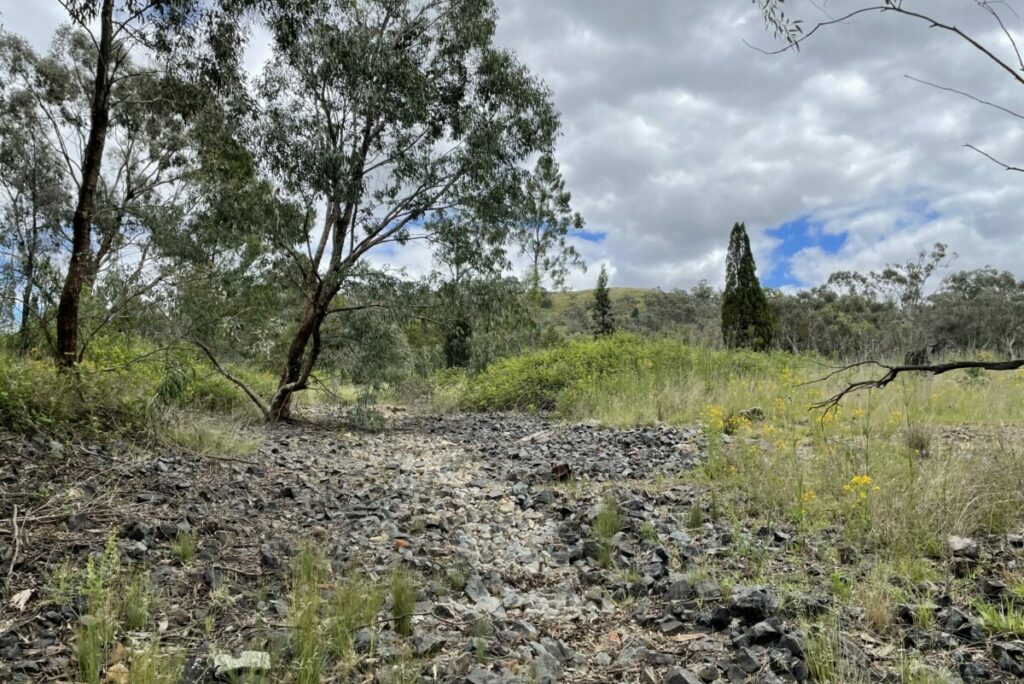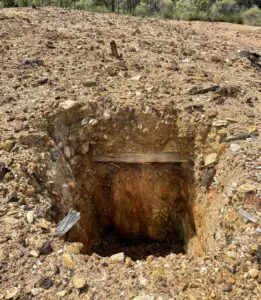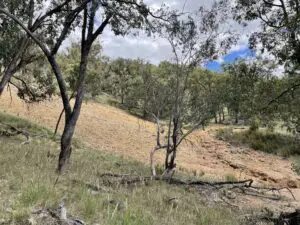SRK’s work on the project so far includes a desktop review of site information to develop a sampling and analysis plan. There has also been a visual inspection of the site, mapping of element concentration using X-ray fluorescence (XRF), and collection and analysis of surface water samples.
Watson says the XRF mapping identified high concentrations of zinc, sulfur, lead and copper in some areas around the mine’s main shaft, and smaller concentrations north of the site.
“Concentrations of arsenic were also high,” Watson says. “It’s possible that the arsenic was associated with ore material from the mine.”
Moreover, sampling found the water was mildly acidic (pH 4) and contained elevated compositions of heavy metals, such as cadmium, copper and lead. Water samples collected upstream and downstream of the site suggested the transportation of contaminants offsite, but concentrations were low and within stock-water guideline values.
Watson says the project’s next steps involve investigating the amount of mining waste remaining on the surface, collecting samples of mineralised wastes to assess their contamination potential, and assessing the volume of material that may be obtained from borrow pits for use in rehabilitation activities.
“This information will be used to characterise the site and assess the risks it poses,” says Watson. “This data can then be used to identify possible remedial options for the site, which may range from doing nothing to carrying out on-site engineering works or removal of contamination for off-site disposal.”
Eight ideas for best practice in the rehabilitation of abandoned mines
1. Site history: Conduct a desktop study of the historical mine site. Identify what was mined and any heavy metals of concern. The presence of sulfides, for example, poses a risk of acid and metalliferous drainage that could leach into nearby waterways.
2. Environmental screening: Understand the geography of the site and its surrounding area. Identify any natural or physical features of an area that could be affected by the mine – and any nearby communities.
3. Sampling and analysis plan: Using the information from the desktop study and environmental screening, develop a sampling and analysis plan to inform a site investigation. The plan should identify areas of potential concern at the historical mine, which could include waste-dump sites, slag heaps, tailings dams, quarries or areas of other possible contaminants. It should also identify the type of sample to collect, such as soil, rock or water, as well as the location from which to collect it.
4. Site investigation: Having identified areas of potential concern, complete a site walkover prior to collecting samples. The samples may range from solids collected from trial pits and drill holes to water from creeks and ponds. The site investigation provides an opportunity to confirm learnings from the desktop review, modify the sampling locations based on ground conditions and gain visual insight into the extent of potential contamination.
5. Laboratory sampling: Send samples collected during the site investigation to a laboratory for a range of analytical tests to understand the composition and reactivity of the materials.
6. Risk assessment: Use information from the desktop study, site investigation and laboratory analysis to develop a detailed risk assessment of the mine. Document key environmental risks, their magnitude and potential longevity. This could include leaching of contaminants into groundwater or surface water from the mine or dust blown off the site.
7. Site-remediation plan: Having identified and quantified site environmental risks, determine if remedial action is required. If so, develop a remediation plan to address the problems.
8. Share learnings: Where possible, document learnings from a mine rehabilitation project and share the results with industry and governments through case studies, papers and/or industry presentations.



